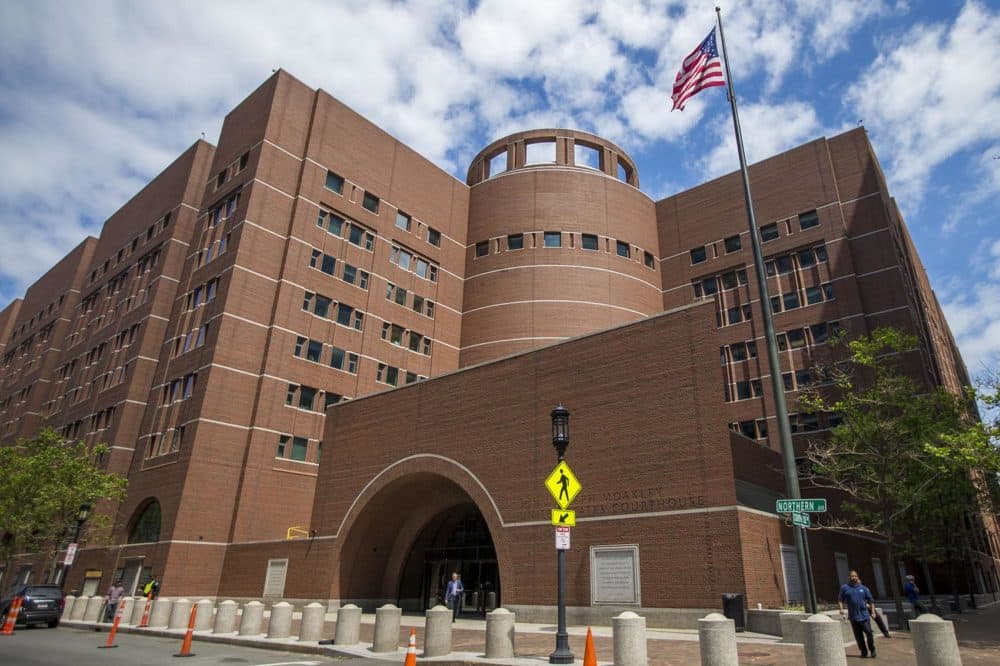Advertisement
Boston City Council's tussle over redistricting map now in federal judge’s hands

A federal judge is now weighing what to do with the redistricting map passed by the City Council last fall. The map carves up Dorchester’s Neponset neighborhood, with some voting precincts going to District 3, represented by Frank Baker, and others to District 4’s Brian Worrell.
The judge, Patti Saris, could leave the map as is, or send it back to the 13-member Council, which spent September and October haggling over which precincts go where, for a rewrite. During a court hearing on Wednesday, Saris said she isn’t interested in drawing a map herself, or appointing an independent “special master” to come up with a map, something that opponents of the redistricting map have pressed for.
Redistricting occurs every ten years, following the U.S. Census, with councilors facing the task of redrawing the political boundaries of nine districts. This year’s process was driven primarily by a growth in the population in South Boston-based District 2, and a loss of population in Dorchester-based District 3.
Saris said she has at most six weeks to resolve the issue, since this year’s municipal election, which uses last fall’s enacted map, is getting underway. She also plans to watch videos of the councilors arguing over maps at working sessions and other meetings.
“Don’t expect an opinion right away,” she said to attorneys.
Her comment came after she heard closing arguments from attorneys for the Wu administration, which is supporting the map, and lawyers for the opponents, who are seeking to strike down the map.
Dorchester’s Neponset area was at the center of the the closing argument made by opponents. The opponents, include local civic groups from Dorchester and South Boston, as well as the four who voted against the map, District 2 Councilor Ed Flynn, District 3’s Frank Baker and Councilors At-Large Michael Flaherty and Erin Murphy.
Their attorney, former state lawmaker Paul Gannon argued the map is illegal because the councilors who crafted it used race as the predominant factor. Map opponents have argued that population balancing should have been the main focus, and moving precincts with high-turnout white voters from District 3 and District 4, as the new map does with Neponset precincts, dilutes the power of Black voters in District 4.
Advertisement
Councilors did not have to go as far as they did in shifting precincts in an effort to diversify the demographics of District 3, Gannon argued.
Gannon pointed to an email his team obtained, sent by a staffer for Allston-Brighton Councilor Liz Breadon, the redistricting committee chair, in which the staffer said just moving seven precincts would’ve been enough but councilors wanted to be “bold.” “He’s acknowledging they went well beyond what they needed to do,” Gannon said.
Saris pushed back, saying staffers often state things that aren’t the views of the people they work for.
Gannon also pressed the judge to have this year’s municipal election rely on the old map. “That’s our position because there is no other map to go to,” he said. But Saris appeared to balk at that, saying the old map violates “one person, one vote” principle, due to District 2’s overpopulation, caused partly by a boom in people moving to the Seaport.
Attorneys for the Wu administration said opponents have an “unrealistic desire” for districts to stay in place. Lon Povich, an attorney hired to defend the map and a former official in former Gov. Charlie Baker’s administration, noted that opponents claim the map destroys their neighborhoods.
But, Povich said, Bostonians will continue to shop in the same grocery stores and worship in the same churches as they did before new map was enacted. “This is not an urban renewal project in the West End,” he said, a reference to efforts by city officials in the 1950s to remake that neighborhood, resulting in the displacement of thousands of residents.
Povich pointed to comments made by Baker in October, in which the councilor referred to Ward 16 in Neponset as his “Jerusalem” and attempting to keep all of its precincts in District 3.
But when it all was said and done, 85% of voters retained Baker as their councilor, and 88% in District 4 kept Councilor Worrell, even with movement of "Jerusalem precincts,” Povich said.
Jennifer Miller, another attorney representing the city, pushed back on the claim that race was a predominant factor and said councilors considered a wide array of issues. Redistricting, she added, is an inherently political process, with advocates drawing maps, councilors drawing maps, and everyone jockeying for position. That’s why, she added, judges tend to exercise “extraordinary caution” before intervening.
Redistricting map opponents have also alleged the councilors violated Open Meeting Law in several meetings focused on redistricting. In 2008, the Council pleaded guilty to violating the law over meetings involving urban renewal plans and a Boston University lab.
On Wednesday, Saris says “everyone agrees” there was an Open Meeting Law violation when a number of councilors gathered in October at the Condon School in South Boston. The meeting was called by the neighborhood’s elected officials, who feared losing precincts to District 3.
But Saris wondered if there has been a judge who has put an election on hold because of such a violation. “It’s a pretty strong step” to do so, she said.
WBUR and the Dorchester Reporter have a partnership in which the news organizations share resources to collaborate on stories. This story was originally published by the Dorchester Reporter.